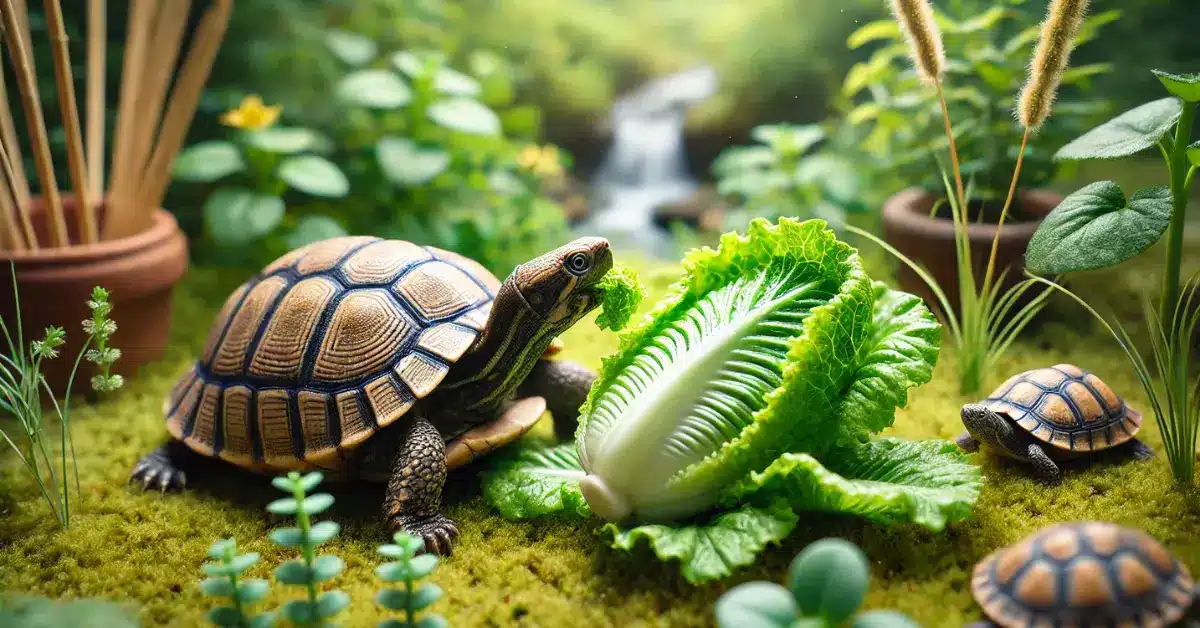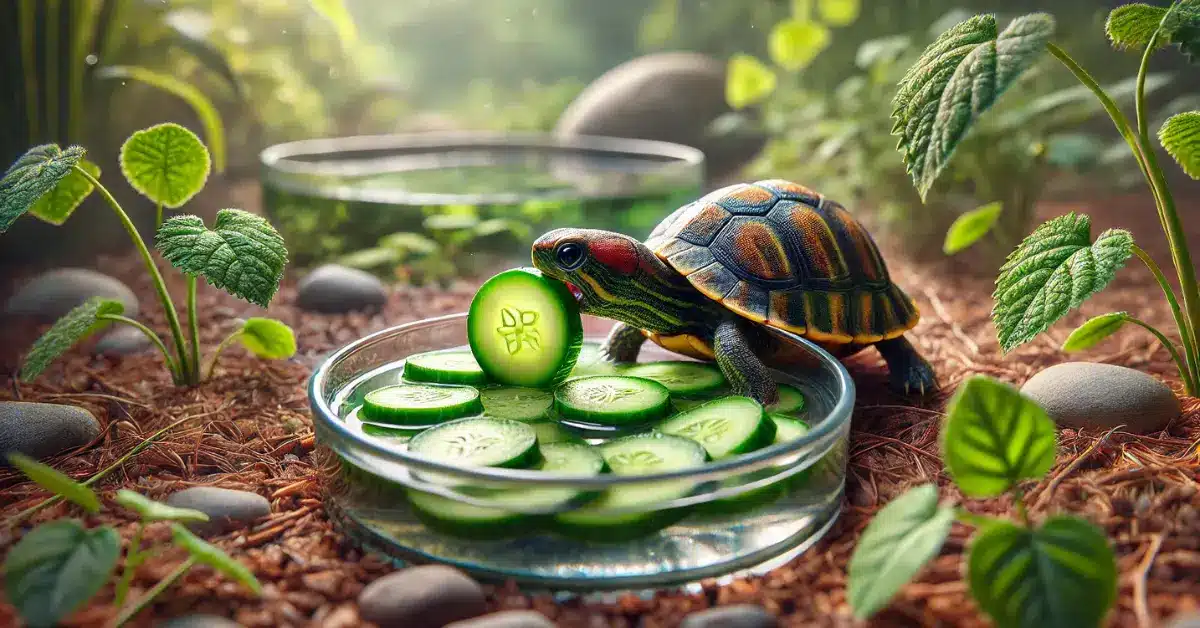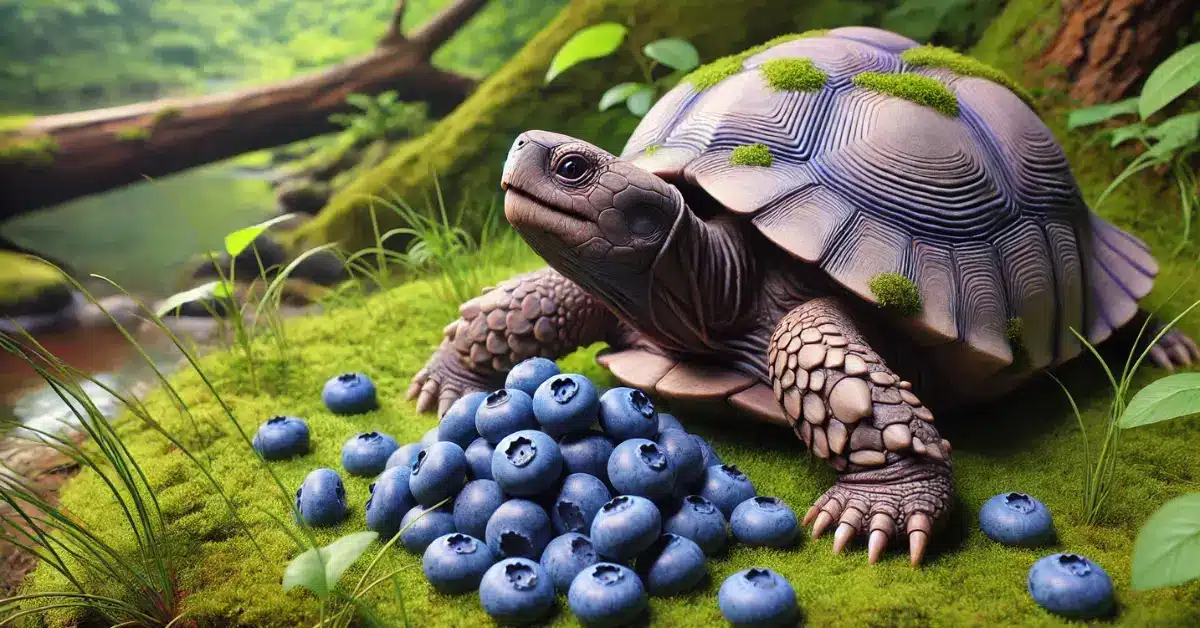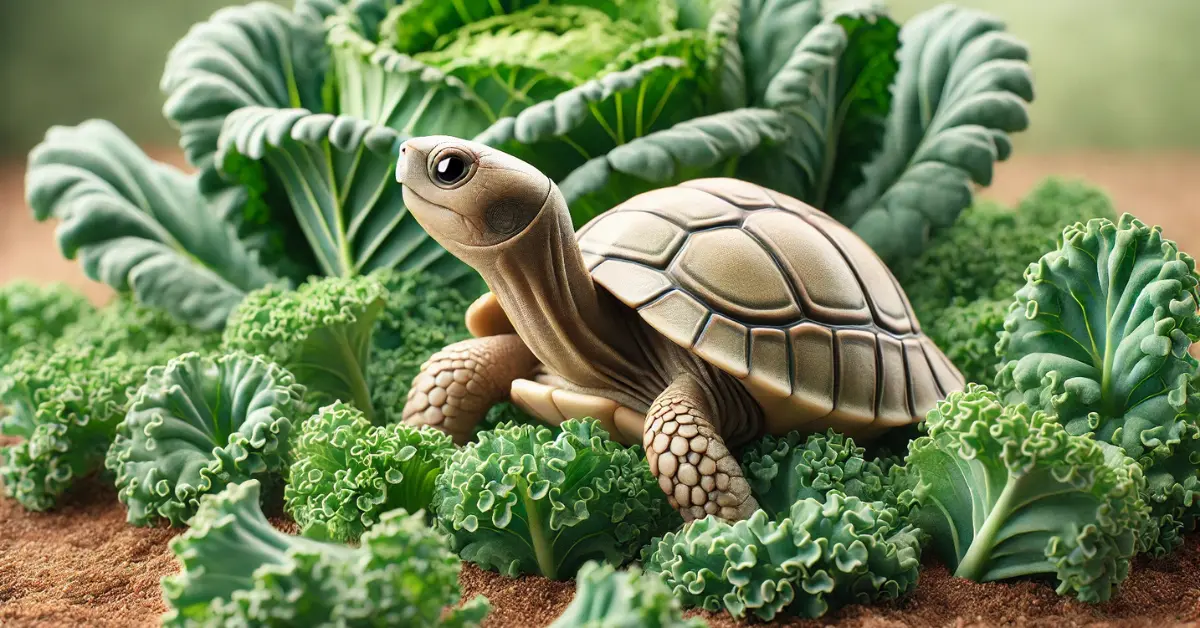Can turtles eat cantaloupe? If you’re a turtle owner, you’ve probably wondered if this sweet, juicy fruit is a safe snack for your pet. While turtles thrive on leafy greens and proteins, the occasional fruit can be a tasty treat. In this guide from Theturtles.info, we’ll dive into the benefits, risks, and proper way to feed cantaloupe to your turtle, ensuring they stay healthy and happy.
Table of Contents
ToggleNutrition Value of Cantaloupe for Turtles
Cantaloupe is a sweet snack for turtles, but it’s important to know what’s inside before feeding it to them. The table below shows the key nutrients in cantaloupe and how they affect turtles.
| Nutrient | Amount (per 100g) | How it Helps Turtles |
| Water | 90% | Keeps turtles hydrated |
| Fiber | 0.9g | Helps with digestion |
| Vitamin A | 3382 IU | Supports healthy eyes and skin |
| Vitamin C | 36.7mg | Strengthens the immune system |
| Potassium | 267mg | Helps the heart and muscles work properly |
| Sugar | 7.9g | Should be limited; too much sugar can be harmful |
| Calcium | 9mg | Important for strong bones and shells |
What Are the Health Benefits of Cantaloupe for Turtles?
Cantaloupe can be a healthy treat for turtles if given in small amounts. It has vitamins and minerals that help turtles stay healthy.
- Hydration: Cantaloupe is mostly water (90%), so it helps turtles stay hydrated. This is important for their bodies and shell health.
- Better Eyesight and Skin: Cantaloupe is rich in Vitamin A, which helps turtles see better and keeps their skin and shell healthy.
- Stronger Immune System: The Vitamin C in cantaloupe helps turtles fight off sickness and heal from injuries faster.
- Good Digestion: Cantaloupe has fiber, which helps turtles digest food better and prevents constipation.
Turtle Species and Cantaloupe Consumption
Different types of turtles have different diets, and some can eat cantaloupe more easily than others. Let’s look at which turtles can safely eat this fruit.
- Aquatic Turtles: Turtles like Red-Eared Sliders, Painted Turtles, and Map Turtles can eat small amounts of cantaloupe. But most of their food should be leafy greens, insects, and other things with more protein.
- Box Turtles: Box turtles eat both plants and meat, so they can enjoy fruits like cantaloupe. It’s a tasty treat for them, but it shouldn’t be a big part of their meals.
- Tortoises: Tortoises mostly eat leafy greens and grass, but species like Sulcata and Russian Tortoises can have cantaloupe sometimes. Since they need high-fiber foods, give cantaloupe only once in a while because of the sugar.

How to Feed Cantaloupe to Turtles
When feeding cantaloupe to your turtle, it’s important to prepare it properly to make it safe and enjoyable.
- Wash the Fruit: Always wash the cantaloupe thoroughly to remove any dirt or chemicals from the outer skin.
- Remove the Rind and Seeds: Turtles should only eat the soft, orange flesh of the cantaloupe. The rind is too tough for them to digest, and the seeds can pose a choking hazard.
- Cut into Small Pieces: Slice the cantaloupe into small, bite-sized pieces. This makes it easier for your turtle to eat and prevents any risk of choking.
- Feed in Moderation: Only offer a small amount of cantaloupe as an occasional treat. Too much fruit, especially one high in sugar, can upset a turtle’s digestive system.
Potential Risks of Feeding Cantaloupe to Turtles
While cantaloupe can be a healthy treat, there are a few risks to be aware of when feeding it to your turtle.
- High Sugar Content: Cantaloupe has a lot of sugar, which can cause digestive issues if your turtle eats too much. It can also lead to long-term problems like obesity or liver issues if given too often.
- Choking Hazards: The seeds and rind of the cantaloupe can be dangerous. Seeds might get stuck in a turtle’s throat, and the rind is too tough for turtles to chew or digest properly.
- Imbalanced Diet: Turtles need a balanced diet with the right mix of protein, vitamins, and minerals. Too much fruit, like cantaloupe, can upset this balance and lead to health problems, especially for species that need more fiber or protein in their diet.
By understanding these risks and feeding cantaloupe in moderation, you can keep your turtle healthy and happy.
Read more: Can Turtles Eat Zucchini?
Conclusion
So, can turtles eat cantaloupe? Yes, they can! Cantaloupe can be a healthy and refreshing treat for turtles when offered in moderation. It provides hydration, essential vitamins, and can even aid in digestion. However, it’s crucial to ensure that you remove the rind and seeds, cut the fruit into small pieces, and avoid overfeeding it due to its high sugar content.
Each turtle species, whether it’s aquatic turtles, box turtles, or tortoises, can enjoy cantaloupe as part of a balanced diet, but remember that the primary focus should always be on leafy greens and protein sources. By carefully following these guidelines, you can provide your turtle with a fun snack while keeping them healthy.
For more tips and advice on caring for your turtles, visit Theturtles.info. We are here to help you make informed decisions about your pet’s diet and well-being!
Frequently Asked Questions about can turtles eat cantaloupe?
Can turtles eat cantaloupe every day?
No, turtles should not eat cantaloupe every day. Cantaloupe is high in sugar, which can lead to health problems like obesity or digestive issues. It’s best to offer cantaloupe as an occasional treat in small amounts.
Is it safe for turtles to eat cantaloupe rind or seeds?
No, turtles should only eat the soft, orange flesh of the cantaloupe. The rind is tough and difficult for turtles to digest, while the seeds can pose a choking hazard.
What other fruits can turtles eat besides cantaloupe?
In addition to cantaloupe, turtles can enjoy fruits like apples, berries, and watermelon in moderation. However, their main diet should focus on leafy greens and protein-rich foods.






